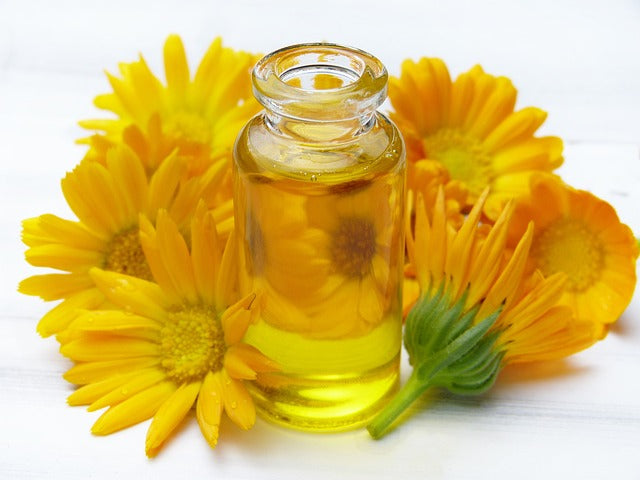Ever get that not-so-fresh feeling and instantly panic, wondering what it could be? It’s likely one of two culprits: a yeast infection or bacterial vaginosis (BV). Neither are fun, but luckily there are ways to determine which it is — and natural remedies to prevent and treat both.
While they share some symptoms, they are distinct conditions caused by different factors and require different treatments. Understanding these differences is crucial for effective management and maintaining overall vaginal health.
What Are Bacterial Vaginosis and Yeast Infections?
First, let’s define them. A yeast infection is caused by an overgrowth of Candida, a fungus that grows naturally in the vagina. Bacterial vaginosis is caused by an overgrowth of bad — or anaerobic — bacteria. In both cases, the body’s natural balance is thrown off, and discomfort inevitably ensues.
Symptoms of BV:
- Unusual Vaginal Discharge: Often described as thin and can be white, gray, or even green.
- Itching or Irritation: While not as common, some may experience mild discomfort.
- Burning Sensation: May be absent, but some women experience burning during urination or intercourse.
- Odor: The most distinctive symptom is the fishy odor, which can be quite noticeable.
Symptoms of Yeast Infections:
- Unusual Vaginal Discharge: There is a thick, white discharge, often described as cottage cheese-like in appearance.
- Itching and Irritation: Severe itching is often the first sign of a yeast infection.
- Burning Sensation: Most women experience burning during urination or intercourse.
- Odor: Can be odorless or have a bready odor.
Causes of BV:
- Having a new or multiple sex partners
- Smoking
- Douching
- A lack of good vaginal bacteria, called lactobacilli.
Causes of Yeast Infections:
Diagnosis: How Are They Identified?
Both conditions can share similar symptoms, which is why it’s important to consult a healthcare provider for accurate diagnosis. There are also OTC tests now available, allowing you to skip a trip to the doctor. If you do go to a healthcare provider:
Bacterial Vaginosis: A healthcare provider may perform a pelvic exam and take a sample of vaginal fluid to check for pH levels and the presence of specific bacteria.
Yeast Infections: Diagnosis can also involve a pelvic exam and lab tests on vaginal discharge to identify the presence of yeast.
Medical Treatment for Yeast Infections and BV
The primary medical treatment for bacterial vaginosis is antibiotics, which can be administered orally or as a topical gel. Commonly prescribed antibiotics include Metronidazole (Flagyl) or Clindamycin (Cleocin). For yeast infections, treatment usually involves antifungal medications, which can be obtained over-the-counter or through a prescription. Common options include Fluconazole (Diflucan) which is an oral prescription, or Clotrimazole or Miconazole which is available as over-the-counter creams or suppositories.
If you experience recurrent symptoms or if over-the-counter treatments are not effective, it’s crucial to consult a healthcare provider. A persistent issue may indicate a more serious underlying condition that requires medical attention.
And while yeast infections can be treated naturally and typically don’t cause other health concerns, having BV opens the door to many other conditions, including the increased potential for contracting sexually transmitted diseases like herpes, gonorrhea, and Chlamydia. It can also lead to additional bacterial infections, as well as pelvic inflammatory disease.
At-Home Remedies for Yeast Infections and BV
Here’s the weird thing: While they’re different conditions caused by different factors, treating both yeast infections and BV at home can be done naturally using the same products. I dig in to home remedies for yeast infections more in this recent blog post, but the list is almost identical these tried-and-true at-home BV treatments:
- Using tea tree oil topically, diluted with a carrier oil, to kill bacteria and fungus
- Eating more garlic and yogurt to kill fungus and add more good bacteria, respectively
- Treating the affected area with 1 ounce daily of inexpensive, effective hydrogen peroxide
- Adding probiotics to your daily routine (this is good for prevention too!).
- Specifically, unsweetened, live-culture yogurt may be beneficial when consumed or applied topically.
- Wearing cotton underwear for its breathability (also good for prevention!). Or bonus, no underwear at all!
- Taking boric acid capsules, which work like a suppository
- Practicing good hygiene: always wipe from front to back and change out of wet bathing suits and sweaty work out clothing as soon as you can.
- Practice safe sex with new or multiple sexual partners.
- Avoid douching: this can throw off the body’s natural pH balance
- Avoid scented soaps as they act as irritants. (Thousands of women rely on my feminine spray to do the trick!)
If you’ve experienced either a yeast infection or BV and you’re dreading making another doctor’s appointment or heading to the pharmacy for a temporary cure, try these solutions instead. It’s time to let nature do its good work!




